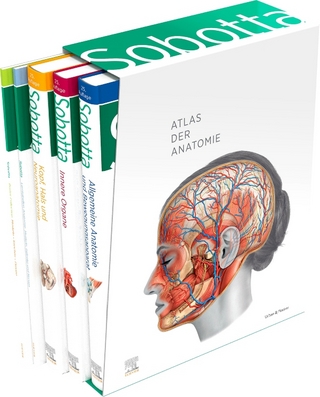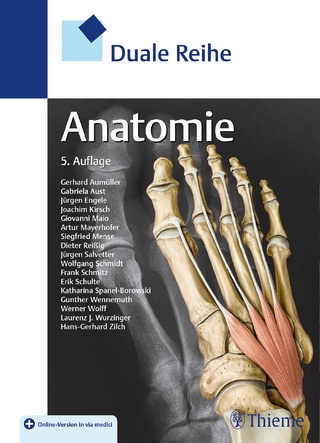
Neuromechanics of Human Movement
Human Kinetics (Verlag)
978-1-7182-1373-9 (ISBN)
- Noch nicht erschienen (ca. Juni 2024)
- Versandkostenfrei
- Auch auf Rechnung
- Artikel merken
Neuromechanics of Human Movement, Sixth Edition, integrates knowledge from the fields of neurophysiology and biomechanics into a unified framework known as neuromechanics. This contemporary approach transcends traditional approaches that focus solely on mechanics and do not consider the role of the sensorimotor system in the control of human movement. Authored by Roger Enoka, a widely recognized and esteemed scholar in neuromechanics, this influential text makes complex information accessible to students of biomechanics, motor learning, and applied physiology.
With more than 500 new references from contemporary research, this sixth edition provides a scientific foundation to the study of human movement, employing precise terms and definitions when discussing ideas. The end of the book includes an appendix that showcases both the base and derived units of the metric system, an appendix that features curve fitting and smoothing to help readers understand how to reduce noise in their data, an appendix on body segment properties, and an appendix that covers the motion at the major joints of the human body. The book also includes a glossary of key terms to help readers better understand the material. The text includes more than 50 practical learning examples, giving students the opportunity to work through a variety of problems and explore current research and applications. Content is visually reinforced with over 325 figures, including illustrations of the neuromechanics involved in sport and rehabilitation movements, to engage students.
Significant content updates in the sixth edition present information relevant for both research and clinical environments, including more contemporary examples throughout the text. The latest edition includes new information on the following subjects:
Wearables to track movement kinematics
Characterization of gait disorders
Technical advances in electromyography
Interactions between muscle, tendon, bone, and joint
Intermuscular reflex pathways
Control of intentional actions
Fatigue and fatigability
Training protocols
Motor recovery after nervous system injury
To encourage a comprehensive learning experience, the text follows a logical progression in which each part builds on the material from the previous section. It begins with an introduction to the biomechanical terms commonly used to describe movement, focusing on the relationship between force and motion. Part II deals with the motor system and introduces essential concepts from neurophysiology required for understanding how movement is produced by the nervous system. Part III focuses on adaptability of the motor system, including the acute and chronic changes that can occur in response to deviations in an individual’s level of physical activity.
The sixth edition of Neuromechanics of Human Movement provides a scientific basis for the study of human movement while continuing to expand current knowledge in the fields of biomechanics and neurophysiology. By integrating these fields in a unique framework, this text offers professionals and students both valuable clinical information and inspiration to deepen their study of human movement.
Roger M. Enoka, PhD, is a professor in the department of integrative physiology at the University of Colorado–Boulder and a professor in the departments of medicine (geriatrics) and neurology at the University of Colorado’s Anschutz Medical Center. He is also the director of the Neurophysiology of Movement Lab. He was previously a biomechanist in the department of biomedical engineering at the Cleveland Clinic Foundation and a professor in the department of physiology at the University of Arizona. Enoka has spent 50 years focusing his research and teaching on the combination of biomechanics and neurophysiology of movement. Internationally known for his achievements as a teacher and researcher, Enoka is the author of approximately 350 journal articles, books, chapters, reviews, and abstracts, including the frequently cited article “Neurobiology of Muscle Fatigue” published in the Journal of Applied Physiology. He is the recipient of numerous honors and awards, including an honorary doctorate (honoris causa) from the Université libre de Bruxelles in Brussels, Belgium (2023); the Borelli Award from the American Society of Biomechanics (2018); and the Basmajian Award from the International Society of Electrophysiology and Kinesiology (2018). He is a member of the American College of Sports Medicine, American Physiological Society, and International Society of Biomechanics. He is also a past president and current member of the American Society of Biomechanics.
Part I. Biomechanics of Movement
Chapter 1. Describing Motion
Measurement Rules
Motion Descriptors
Constant Acceleration
Up and Down
Scalars and Vectors
Linear and Angular Motion
Wearable Devices
Summary
Suggested Readings
Chapter 2. Movement Forces
Laws of Motion
Describing Forces in Human Movement
Forces Due to Body Mass
Forces Due to the Surroundings
Musculoskeletal Forces
Summary
Suggested Readings
Chapter 3. Movement Analysis
Static Analysis
Dynamic Analysis
Momentum
Work
Summary
Suggested Readings
Chapter 4. Fundamental Movements
Walking and Running
Jumping
Throwing and Kicking
Cycling
Summary
Suggested Readings
Part II. The Motor System
Chapter 5. Excitable Membranes
Essentials of Electricity
Resting Membrane Potential
Neurons
Synaptic Transmission
Electromyography
Summary
Suggested Readings
Chapter 6. Muscle and Motor Units
Muscle
Excitation–Contraction Coupling
Motor Unit
Muscle Mechanics
Summary
Suggested Readings
Chapter 7. Neural Control of Movement
Spinal Reflexes
Automatic Behaviors
Voluntary Actions
Summary
Suggested Readings
Part III. Adaptability of the Motor System
Chapter 8. Acute Adjustments
Warm-Up Effects
Flexibility
Muscle Soreness and Damage
Fatigue
Neuromuscular Potentiation
Arousal
Summary
Suggested Readings
Chapter 9. Chronic Adaptations
Muscle Strength
Muscle Power
Neuromuscular Adaptations to Microgravity
Motor Recovery After Nervous System Injury
Adaptations in Older Adults
Summary
Suggested Readings
Appendix A. SI Units
Appendix B. Curve Fitting and Smoothing
Appendix C. Body Segment Properties
Appendix D. Range of Motion at the Major Joints of the Human Body
| Erscheint lt. Verlag | 3.6.2024 |
|---|---|
| Verlagsort | Champaign, IL |
| Sprache | englisch |
| Gewicht | 1157 g |
| Themenwelt | Studium ► 1. Studienabschnitt (Vorklinik) ► Anatomie / Neuroanatomie |
| Studium ► 1. Studienabschnitt (Vorklinik) ► Physiologie | |
| Naturwissenschaften ► Biologie ► Humanbiologie | |
| ISBN-10 | 1-7182-1373-5 / 1718213735 |
| ISBN-13 | 978-1-7182-1373-9 / 9781718213739 |
| Zustand | Neuware |
| Haben Sie eine Frage zum Produkt? |
aus dem Bereich


